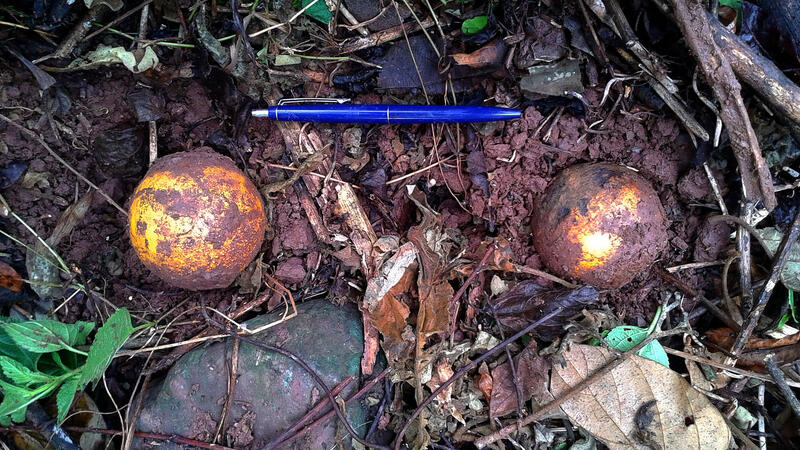The Nation published a cover story on February 25 detailing ongoing efforts to tackle cluster munition remnants and deal with the legacy of other weapons used extensively by the U.S. in the Vietnam War.
The article comes 50 years after the first U.S. troops came ashore at Da Nang in South Vietnam and profiles the work of Project "Restoring the Environment and Neutralizing the Effects of War" or RENEW created in 2001, particularly of its founder Mr. Chuck Searcy, a U.S. veteran of the Vietnam War, and his colleague Mr. Ngo Xuan Hien.
Project RENEW clears unexploded ordnance (UXO) including cluster munition remnants in Vietnam's Quang Tri province. In the article, author George Black describes cluster munitions as "the most malignant of all the UXO" due to the way their bomblets "blanket an area the size of two or three football fields ... shredding anything in their path" and "leave unexploded ones to rust away in the ground, some become inert, while others become unstable."
According to the article, Project RENEW was until recently funded by the U.S. State Department’s Office of Weapons Removal and Abatement, but today is mostly funded by Norwegian People's Aid. In November 2014, however, PBS reported that after Senator Patrick Leahy’s fact-finding visit to Vietnam earlier this year, Congress had nearly tripled the amount of funding for UXO removal projects throughout Southeast Asia, including Vietnam.
Searcy began working in Vietnam in 1994 to establish a humanitarian project by the Vietnam Veterans of America Foundation to provide orthopedic braces.
Vietnam has not signed the Convention on Cluster Munitions, but unlike the U.S. its officials have regularly participated as observers in meetings of the convention and express their government’s support for the convention's humanitarian aims.
Vietnam has often expressed concern at its ability to meet the convention's ten-year clearance deadline goal, stating it needs “some decades, even a hundred year[s] to fully complete the clearance” of areas contaminated by cluster munition remnants. It often points to a lack of U.S. signature and the need for “cluster munitions users, producers, and exporters” to be “responsible for assisting affected countries."
For more information, see:
- George Black, "The Lethal Legacy of the Vietnam War," The Nation (Feb. 25, 2015)
- Cluster Munition Monitor 2014 ban policy profile on Vietnam (Aug. 12, 2014)
- "U.S. veteran leads clean-up of Vietnam's lethal remnants," PBS (Nov. 20, 2014)
